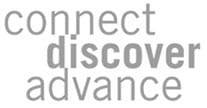Tricks of the Trade
- Posted on: Feb 15 2018
 It’s interesting that, even with mounds of evidence that confirms the health hazards of UV exposure, we are still routinely seeing patients enter dermatology offices with glowing, sun-kissed skin. To some health professionals, this is a maddening dance; the one in which we take a forward step toward skin cancer prevention and our patients simultaneously (and metaphorically, of course) step back or to the side.
It’s interesting that, even with mounds of evidence that confirms the health hazards of UV exposure, we are still routinely seeing patients enter dermatology offices with glowing, sun-kissed skin. To some health professionals, this is a maddening dance; the one in which we take a forward step toward skin cancer prevention and our patients simultaneously (and metaphorically, of course) step back or to the side.
Most people are well aware of the fact that UV exposure is the prime risk factor for skin cancer. What consumers are still learning is how the sun may affect other matters of importance. For instance, what we used to perceive as the normal signs of aging have now been associated with our prolonged exposure to natural sunlight or artificial light from tanning beds. In the medical field, we refer to it as photoaging. Our patients refer to it, and its indications like sun spots, wrinkles, and sagging skin, as a major frustration.
More Tools for Success
Whether or not our ultimate objective is to help patients avoid the ravages of skin cancer, we have to understand that they may not share in our concern. As medical professionals, we see what skin cancer does to people. A large majority of the population does not. Therefore, we may have to take an innovative approach to education.
Signs of Sun Damage
The first indication of sun damage is a golden tan. Most patients don’t see it this way. They look at something more obvious, like a blistering burn, as being problematic. However, when the skin turns brown, it is because the middle layer of skin, the dermis, has absorbed too much ultraviolet radiation and has infiltrated the epidermis with melanin as a protective barrier. Because the dermis is also where collagen and elastin live, the absorption of UV light damages the strands of proteins that support teaching, bright skin.
UV damage doesn’t just degrade collagen; it also alters the production of elastin, which further diminishes collagen’s ability to restore and repair. Through repetitive exposure, this damage progressively increases until the skin finally takes on a leathery, mottled appearance.
The solution to sun damage is so simple, and yet the struggle to prevent that damage and subsequent instances of skin cancer is real. As we approach the summer months, it is up to us to be innovative in our approach with patients as we recommend the use of broad-spectrum sunscreen and limited exposure to UV light.
In addition to patient education, it is also important to stay up-to-date with the latest training related to skin cancer. For more information on our Mohs educational programs, call (800) 616-2767.
Posted in: Skin Cancer


